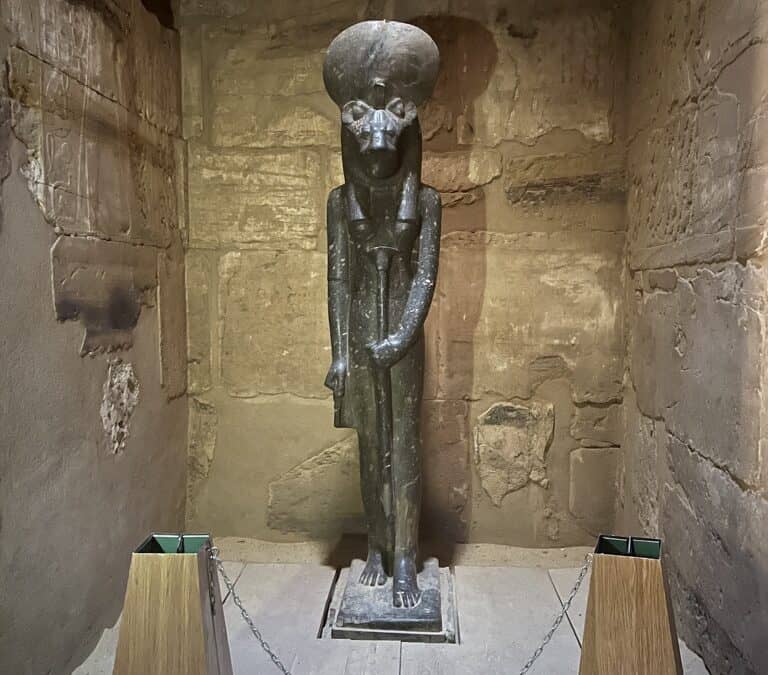For many women, anger has been treated as something to avoid or suppress. From an early age, we are often socialised to be “good girls” polite, agreeable, and accommodating. But anger is a natural human emotion with a clear neurological and physiological function. Suppressing it can have consequences not only for our mental health but also for our physical wellbeing.
Sekhmet, the lion-headed goddess of ancient Egypt, was associated with war, protection, and healing. She represents both destructive power and restorative medicine. In this way, she offers a powerful ally for exploring anger as both a force of clarity and a pathway to healing.
What Anger Does in the Brain and Body
Anger is part of the body’s survival mechanism:
Amygdala activation When we perceive a threat or injustice, the amygdala (the brain’s alarm system) sends signals that mobilise the body.
Hypothalamus and adrenal response The hypothalamus activates the sympathetic nervous system, releasing stress hormones (adrenaline, noradrenaline, cortisol). This increases heart rate, blood pressure, and muscle readiness.
Energy shift Blood flow is directed away from digestion and toward the muscles, preparing us to act.
Focus and alertness Neurochemicals heighten attention, helping us respond quickly and decisively.
Research shows that anger produces clear physiological shifts: heart rate and blood pressure rise, testosterone increases, and in some cases cortisol drops signalling the body’s readiness to act rather than collapse. Neuroimaging also shows anger activates not only the amygdala but social–emotional regions such as the superior temporal sulcus (STS).
The Release of Healthy Anger
Allowing ourselves to feel and move anger (rather than repress it) creates release:
Stress hormone levels drop as the body completes the “fight” cycle.
Breathing and heart rate return to baseline.
Endorphins may be released, leaving the body calmer.
Boundaries and self-respect are reinforced, helping us feel more grounded.
One simple but powerful practice is affect labeling naming your emotion (“I feel angry”). Neuroscience shows that this activates the prefrontal cortex and reduces amygdala reactivity, leading to both psychological and physiological calming.
The Myths That Keep Us Silent
Cultural conditioning often teaches us to fear or suppress anger:
“Anger is dangerous.” In reality, it is suppressed anger, turned inward, that can cause harm.
“Good women don’t get angry.” This belief disconnects us from authentic self-expression.
“Anger only destroys.” Properly channelled, anger also protects, clarifies, and heals.
In fact, studies suggest that when appropriately harnessed, anger can improve focus and performance on challenging tasks, giving us clarity and drive.
Sekhmet as Ally
In Egyptian mythology, Sekhmet was fierce, lion-headed, and known as the protector of Ma’at the principle of truth, balance, and justice. While she could be destructive in myth, she was equally revered as a goddess of healing and medicine. Ancient Egyptian priests and healers invoked her for both protection and restoration.
Sekhmet reminds us that anger can be sacred when used in service of truth. Her mythology shows that fierce energy and healing are not opposites, they are two sides of the same force.
Companion Practice: Roar With Sekhmet
This is a practice to safely release anger and honour it as sacred fire, just as Sekhmet, the lioness goddess, teaches us.
Step 1: Call in Sekhmet
Find a private space where you won’t be interrupted. Stand tall, feet rooted to the ground, and breathe deeply. Imagine Sekhmet at your side, lioness eyes blazing with truth, protecting you as you prepare to release.
Step 2: Shake and Awaken
Shake your hands, arms, shoulders, and legs. Imagine you are shaking loose the old stories that told you to stay small, quiet, or “good.”
Step 3: Stomp the Earth
Stamp your feet firmly into the ground, one after the other, like the lioness pacing her territory. With each stomp, claim your right to be here, to feel, to take up space.
Step 4: Roar the Truth
As you stomp or strike a pillow, let out a sound, a growl, a roar, or a fiery exhale. Let it rise from your belly. Imagine Sekhmet’s roar moving through you, burning away what no longer serves and clearing space for truth.
Step 5: Return to Stillness
Place your hands over your heart or belly. Take slow breaths, lengthening your exhale. Feel the fire settle into a warm glow. Sekhmet’s presence softens, her roar becomes your strength, your clarity.
Step 6: Reflection
Ask yourself:
What boundary does my anger protect?
What truth is ready to be spoken?
✨ Why this works: This practice lets the nervous system complete its fight response, shaking and stomping discharge adrenaline, roaring engages the vagus nerve, and slow breathing restores balance. With Sekhmet as your ally, anger transforms into clarity, protection, and healing. Neuroscience supports this, movement, sound, and naming emotions all help regulate anger, preventing it from becoming destructive while restoring the nervous system to balance.
Further Reading
“Putting Feelings Into Words Produces Therapeutic Effects in the Brain” – UCLA study on affect labeling.
Social Cognitive and Affective Neuroscience: research on anger and cortisol/testosterone patterns.
American Psychological Association (APA): The Upside of Anger articles.
✨ Anger, when felt and expressed consciously, becomes not a flaw but a sacred force: a fire that protects, a healer that clears, and an energy that restores balance.





